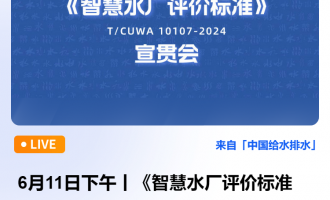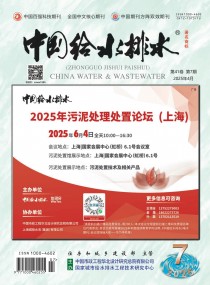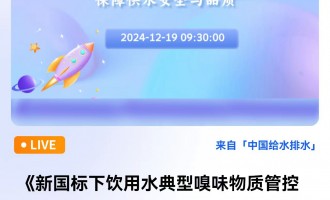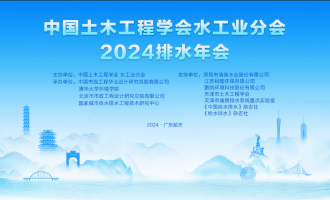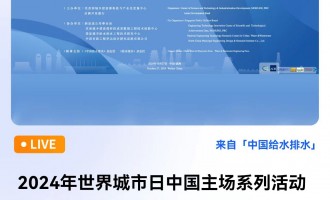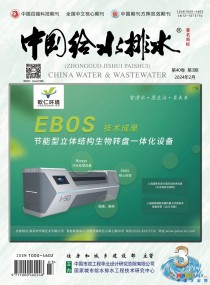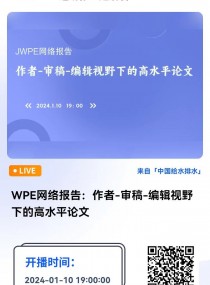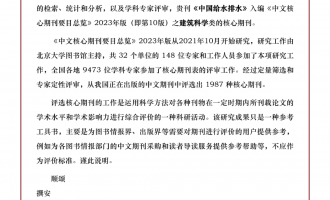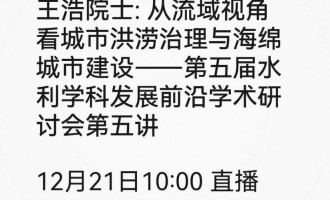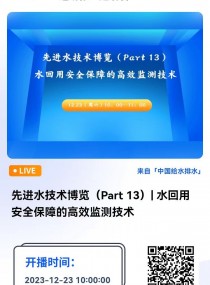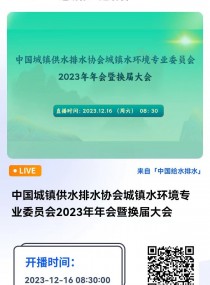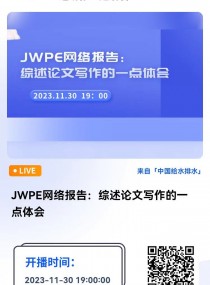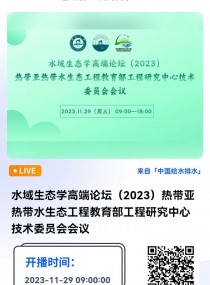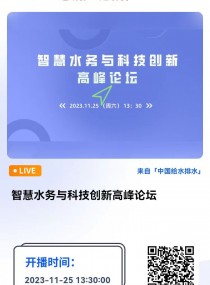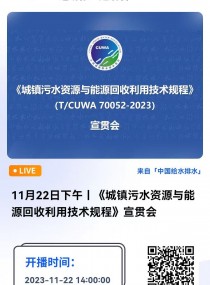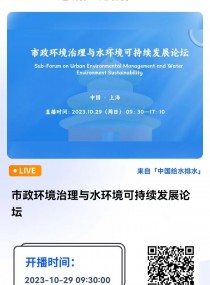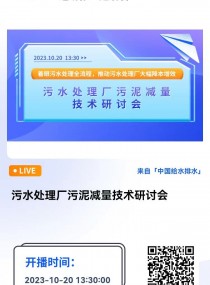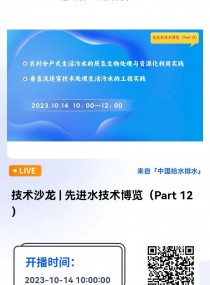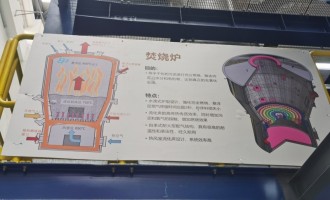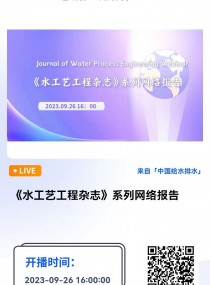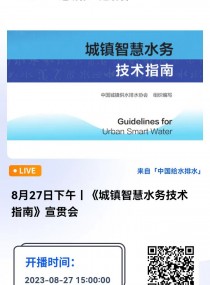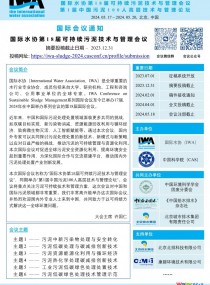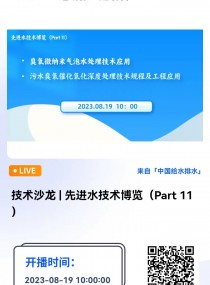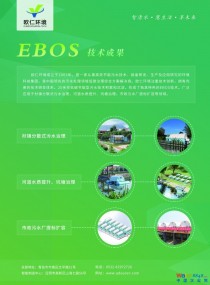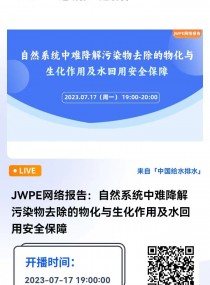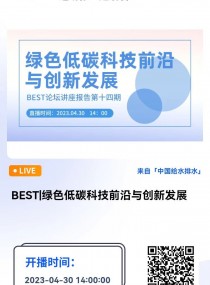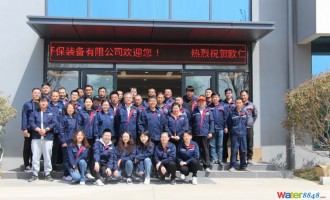WHO GUIDELINES FOR THE
SAFE USE OF WASTEWATER,
EXCRETA AND GREYWATER
VOLUME IV
EXCRETA AND GREYWATER USE IN AGRICULTURE
GUIDELINES FOR THE SAFE USE OF
WASTEWATER, EXCRETA AND GREYWATER
Volume 4
Excreta and greywater use in agriculture
ii
WHO Library Cataloguing-in-Publication Data
WHO guidelines for the safe use of wastewater, excreta and greywater / World
Health Organization.
v. 1. Policy and regulatory aspects — v. 2. Wastewater use in agriculture
— v. 3. Wastewater and excreta use in aquaculture — v. 4. Excreta and
greywater use in agriculture.
1. Water supply. 2. Water supply - legislation. 3. Agriculture. 4. Aquaculture.
5. Sewage. 6. Wastewater treatment plants. 7. Guidelines. I. World Health
Organization. II. Title: Safe use of wastewater, excreta and greywater. III.
Title: Policy and regulatory aspects. IV. Title: Wastewater use in agriculture.
V. Title: Wastewater and excreta use in aquaculture. VI. Title: Excreta and
greywater use in agriculture.
ISBN 92 4 154686 7 (set) (NLM classification: WA 675)
ISBN 92 4 154682 4 (v. 1)
ISBN 92 4 154683 2 (v. 2)
ISBN 92 4 154684 0 (v. 3)
ISBN 92 4 154685 9 (v. 4)
© World Health Organization 2006
All rights reserved. Publications of the World Health Organization can be obtained from WHO Press,
World Health Organization, 20 Avenue Appia, 1211 Geneva 27, Switzerland (tel: +41 22 791 2476;
fax: +41 22 791 4857; email: bookorders@who.int). Requests for permission to reproduce or translate
WHO publications – whether for sale or for noncommercial distribution – should be addressed
to WHO Press, at the above address (fax: +41 22 791 4806; email: permissions@who.int).
The designations employed and the presentation of the material in this publication do not imply the
expression of any opinion whatsoever on the part of the World Health Organization concerning the
legal status of any country, territory, city or area or of its authorities, or concerning the delimitation
of its frontiers or boundaries. Dotted lines on maps represent approximate border lines for which
there may not yet be full agreement.
The mention of specific companies or of certain manufacturers’ products does not imply that they
are endorsed or recommended by the World Health Organization in preference to others of a similar
nature that are not mentioned. Errors and omissions excepted, the names of proprietary products are
distinguished by initial capital letters.
All reasonable precautions have been taken by WHO to verify the information contained in this
publication. However, the published material is being distributed without warranty of any kind,
either express or implied. The responsibility for the interpretation and use of the material lies with the
reader. In no event shall the World Health Organization be liable for damages arising from its use.
Printed in France.
iii
CONTENTS
List of acronyms and abbreviations .....................................................................vi
Preface ....................................................................................................................vii
Acknowledgements ................................................................................................ix
Executive summary ............................................................................................. xiii
1. Introduction .........................................................................................................1
1.1 Objectives and general considerations ...........................................................2
1.2 Target audience and defi nitions ......................................................................3
1.3 International guidelines and national standards .............................................3
1.3.1 National standards .................................................................................3
1.3.2 Food exports ..........................................................................................4
1.4 Factors that affect sustainability in sanitation ................................................4
1.4.1 Health and hygiene ................................................................................4
1.4.2 Environment and resource use ...............................................................5
1.4.3 Economy ................................................................................................5
1.4.4 Sociocultural aspects and use ................................................................5
1.4.5 Technology function ..............................................................................5
1.5 Driving forces .................................................................................................6
1.5.1 Water scarcity, stress and degradation ...................................................6
1.5.2 Population growth and food production ................................................7
1.5.3 Excreta and greywater as resources .......................................................8
1.5.4 Millennium Development Goals ..........................................................15
2. The Stockholm Framework..............................................................................19
2.1 A harmonized approach to risk assessment/management .............................19
2.2 Elements of the Stockholm Framework .......................................................20
2.3 Assessment of environmental exposure .......................................................21
2.4 Assessment of health risk .............................................................................22
2.5 Tolerable risk and health-based targets ........................................................24
2.5.1 Tolerable risk .......................................................................................25
2.5.2 Health-based targets .............................................................................25
2.6 Risk management .........................................................................................26
2.7 Public health status .......................................................................................27
3. Assessment of health risk..................................................................................29
3.1 Health benefi ts ..............................................................................................29
3.2 Excreta-related infections .............................................................................30
3.2.1 Pathogens in faeces. .............................................................................31
3.2.2 Pathogens in urine ................................................................................34
3.2.3 Pathogens in greywater ........................................................................36
3.3 Pathogen survival in faeces, urine and greywater ........................................37
3.3.1 Survival in faeces .................................................................................37
3.3.2 Survival in urine ..................................................................................39
3.3.3 Faecal load and survival of faecal pathogens in greywater .................41
3.4 Survival in soils and on crops .......................................................................42
3.5 Epidemiological and risk-based evidence ....................................................44
3.6 Quantitative microbial risk analysis .............................................................49
3.6.1 Example of risk calculation for a greywater scenario .........................49
3.6.2 Example of risk calculation for collection and use of diverted
human urine ..................................................................................................51
3.6.3 Example of risk calculation for stored but otherwise untreated excreta ...... 55
iv
Guidelines for the safe use of wastewater, excreta and greywater
4. Health-based targets .........................................................................................59
4.1 Type of targets applied .................................................................................60
4.2 Tolerable burden of disease and health-based targets ..................................60
4.3 Microbial reduction targets...........................................................................64
4.4 Verifi cation monitoring .................................................................................66
4.4.1 Treatment of excreta and greywater ....................................................67
4.4.2 Other health protection measures ........................................................67
4.4.3 Excreta in small systems ......................................................................68
4.4.4 Operational monitoring for urine in large- and small-scale systems ...70
5. Health protection measures ..............................................................................73
5.1 Specifi c considerations for exposure control in the use of urine, faeces
and greywater ...............................................................................................74
5.1.1 Exposure control: general principles ...................................................75
5.1.2 Exposure control at agricultural sites or site of use. ............................75
5.1.3 Post-harvest exposure control. .............................................................78
5.2 Technical measures .......................................................................................79
5.2.1 On-site sanitation systems ...................................................................79
5.2.2 Handling and transport of excreta and sludge .....................................88
5.2.3 Treatment of blackwater and septic tank/faecal sludge .......................90
5.2.4 Greywater ............................................................................................93
6. Monitoring and system assessment ...............................................................101
6.1 Monitoring functions ..................................................................................101
6.2 System assessment .....................................................................................102
6.3 Validation ....................................................................................................102
6.4 Operational monitoring ..............................................................................104
6.5 Verifi cation .................................................................................................106
6.6 Small systems .............................................................................................107
6.7 Other types of monitoring ..........................................................................107
7. Sociocultural aspects .......................................................................................109
7.1 Perceptions of excreta and greywater use ..................................................109
7.2 Food-related determinants ..........................................................................111
7.3 Behavioural change and cultural factors ....................................................111
7.4 Convenience factors and dignity issues ......................................................113
7.5 Gender aspects on use of excreta and greywater ........................................114
8. Environmental aspects ....................................................................................117
8.1 Impacts on soil ............................................................................................117
8.1.1 Metals ................................................................................................118
8.1.2 Persistent organic compounds ...........................................................119
8.1.3 Salinization ........................................................................................120
8.2 Impacts on water bodies .............................................................................121
9. Economic and fi nancial considerations .........................................................123
9.1 Economic feasibility ...................................................................................123
9.1.1 Cost–benefi t analysis .........................................................................123
9.1.2 Costs and benefi ts ..............................................................................124
9.1.3 Multiple-objective decision-making processes ..................................125
9.1.4 Empirical examples of cost analyses for reuse systems ....................125
9.2 Financial feasibility ....................................................................................127
9.3 Market feasibility .......................................................................................132
v
Volume 4: Excreta and greywater use in agriculture
10. Policy aspects .................................................................................................133
10.1 Policy ............................................................................................................133
10.1.1 International policy ..........................................................................134
10.1.2 National greywater and excreta use policies ...................................134
10.1.3 Greywater and excreta in integrated water resources management .135
10.2 Legislation ................................................................................................135
10.2.1 Institutional roles and responsibilities .............................................136
10.2.2 Other roles and responsibilities .......................................................139
10.2.3 Rights of access ...............................................................................142
10.2.4 Land tenure ......................................................................................142
10.2.5 Public health ....................................................................................142
10.3 Regulation ................................................................................................142
10.4 Development of a national policy framework ..........................................143
10.4.1 Defi ning objectives ..........................................................................144
10.4.2 Analysis of the existing policy framework ......................................144
10.4.3 Development of action plans ...........................................................146
10.4.4 Research ...........................................................................................148
11. Planning and implementation ......................................................................149
11.1 Adopting an appropriate planning approach .............................................149
11.2 Local project planning: specifi c considerations........................................151
11.2.1 Participatory approaches ..................................................................151
11.2.2 Treatment .........................................................................................152
11.2.3 Crop restriction ................................................................................153
11.2.4 Application .......................................................................................153
11.2.5 Human exposure control ..................................................................153
11.2.6 Costs .................................................................................................154
11.2.7 Technical aspects..............................................................................155
11.2.8 Support services ...............................................................................156
11.2.9 Training ............................................................................................156
References. ...........................................................................................................157
Annex 1: Glossary of terms used in Guidelines................................................177
vi
LIST OF ACRONYMS AND
ABBREVIATIONS
vii
PREFACE
viii
Guidelines for the safe use of wastewater, excreta and greywater
ix
ACKNOWLEDGEMENTS
x
Guidelines for the safe use of wastewater, excreta and greywater
xi
Volume 4: Excreta and greywater use in agriculture
xiii
EXECUTIVE SUMMARY
xiv
Guidelines for the safe use of wastewater, excreta and greywater
xv
Volume 4: Excreta and greywater use in agriculture
xvi
Guidelines for the safe use of wastewater, excreta and greywater
xvii
Volume 4: Excreta and greywater use in agriculture
xviii
Guidelines for the safe use of wastewater, excreta and greywater
xix
Volume 4: Excreta and greywater use in agriculture
xx
Guidelines for the safe use of wastewater, excreta and greywater
1
1
INTRODUCTION
10. Policy aspects
11. Planning and
implementation
4. Health-based
targets
5. Health protection
measures
6. Monitoring
and system
assessment
1. Introduction
Guidelines
7. Sociocultural
aspects
8. Environmental
aspects
9. Economic and
financial
considerations
Other
information
2. Stockholm
Framework
3. Assessment of
health risk
Supporting
evidence
2
Guidelines for the safe use of wastewater, excreta and greywater
3
Volume 4: Excreta and greywater use in agriculture
4
Guidelines for the safe use of wastewater, excreta and greywater
5
Volume 4: Excreta and greywater use in agriculture
6
Guidelines for the safe use of wastewater, excreta and greywater
7
Volume 4: Excreta and greywater use in agriculture
8
Guidelines for the safe use of wastewater, excreta and greywater
9
Volume 4: Excreta and greywater use in agriculture
10
Guidelines for the safe use of wastewater, excreta and greywater
11
Volume 4: Excreta and greywater use in agriculture
12
Guidelines for the safe use of wastewater, excreta and greywater
13
Volume 4: Excreta and greywater use in agriculture
14
Guidelines for the safe use of wastewater, excreta and greywater
15
Volume 4: Excreta and greywater use in agriculture
16
Guidelines for the safe use of wastewater, excreta and greywater
17
Volume 4: Excreta and greywater use in agriculture
18
Guidelines for the safe use of wastewater, excreta and greywater
19
Volume 42: Excreta and greywater use in agriculture
THE STOCKHOLM FRAMEWORK
20
Guidelines for the safe use of wastewater, excreta and greywater
Health-based
targets
Basic control
approaches
Water/waste
quality objectives
Other management
objectives
Define measures and interventions
(requirements, specifications) based
on objectives
Assessment of
health risk
Assess
environmental
exposure
Public health
status
Tolerable
health risk
Define key risk points and audit
procedures for overall system
effectiveness
Define analytical verifications (process,
public health)
Health risk management
21
Volume 4: Excreta and greywater use in agriculture
Table 2.1 (continued)
22
Guidelines for the safe use of wastewater, excreta and greywater
23
Volume 4: Excreta and greywater use in agriculture
24
Guidelines for the safe use of wastewater, excreta and greywater
25
Volume 4: Excreta and greywater use in agriculture
26
Guidelines for the safe use of wastewater, excreta and greywater
27
Volume 4: Excreta and greywater use in agriculture
28
Guidelines for the safe use of wastewater, excreta and greywater
29
Volume 43: Excreta and greywater use in agriculture
ASSESSMENT OF HEALTH RISK
30
Guidelines for the safe use of wastewater, excreta and greywater
31
Volume 4: Excreta and greywater use in agriculture
32
Guidelines for the safe use of wastewater, excreta and greywater
Volume 4: Excreta and greywater use in agriculture
33
34
Guidelines for the safe use of wastewater, excreta and greywater
Volume 4: Excreta and greywater use in agriculture
35
36
Guidelines for the safe use of wastewater, excreta and greywater
37
Volume 4: Excreta and greywater use in agriculture
38
Guidelines for the safe use of wastewater, excreta and greywater
39
Volume 4: Excreta and greywater use in agriculture
40
Guidelines for the safe use of wastewater, excreta and greywater
41
Volume 4: Excreta and greywater use in agriculture
42
Guidelines for the safe use of wastewater, excreta and greywater
43
Volume 4: Excreta and greywater use in agriculture
44
Guidelines for the safe use of wastewater, excreta and greywater
45
Volume 4: Excreta and greywater use in agriculture
46
Guidelines for the safe use of wastewater, excreta and greywater
47
Volume 4: Excreta and greywater use in agriculture
48
Guidelines for the safe use of wastewater, excreta and greywater
Table 3.11 (continued)
49
Volume 4: Excreta and greywater use in agriculture
50
Guidelines for the safe use of wastewater, excreta and greywater
51
Volume 4: Excreta and greywater use in agriculture
52
Guidelines for the safe use of wastewater, excreta and greywater
53
Volume 4: Excreta and greywater use in agriculture
54
Guidelines for the safe use of wastewater, excreta and greywater
55
Volume 4: Excreta and greywater use in agriculture
56
Guidelines for the safe use of wastewater, excreta and greywater
57
Volume 4: Excreta and greywater use in agriculture
58
Guidelines for the safe use of wastewater, excreta and greywater
59
Volume 44: Excreta and greywater use in agriculture
HEALTH-BASED TARGETS
60
Guidelines for the safe use of wastewater, excreta and greywater
61
Volume 4: Excreta and greywater use in agriculture
62
Guidelines for the safe use of wastewater, excreta and greywater
Volume 4: Excreta and greywater use in agriculture
63
64
Guidelines for the safe use of wastewater, excreta and greywater
65
Volume 4: Excreta and greywater use in agriculture
66
Guidelines for the safe use of wastewater, excreta and greywater
67
Volume 4: Excreta and greywater use in agriculture
68
Guidelines for the safe use of wastewater, excreta and greywater
69
Volume 4: Excreta and greywater use in agriculture
70
Guidelines for the safe use of wastewater, excreta and greywater
71
Volume 4: Excreta and greywater use in agriculture
72
Guidelines for the safe use of wastewater, excreta and greywater
73
Volume 45: Excreta and greywater use in agriculture
HEALTH PROTECTION MEASURES
74
Guidelines for the safe use of wastewater, excreta and greywater
75
Volume 4: Excreta and greywater use in agriculture
76
Guidelines for the safe use of wastewater, excreta and greywater
77
Volume 4: Excreta and greywater use in agriculture
78
Guidelines for the safe use of wastewater, excreta and greywater
79
Volume 4: Excreta and greywater use in agriculture
80
Guidelines for the safe use of wastewater, excreta and greywater
81
Volume 4: Excreta and greywater use in agriculture
82
Guidelines for the safe use of wastewater, excreta and greywater
83
Volume 4: Excreta and greywater use in agriculture
84
Guidelines for the safe use of wastewater, excreta and greywater
85
Volume 4: Excreta and greywater use in agriculture
Table 5.2 (continued)
86
Guidelines for the safe use of wastewater, excreta and greywater
87
Volume 4: Excreta and greywater use in agriculture
88
Guidelines for the safe use of wastewater, excreta and greywater
89
Volume 4: Excreta and greywater use in agriculture
90
Guidelines for the safe use of wastewater, excreta and greywater
91
Volume 4: Excreta and greywater use in agriculture
92
Guidelines for the safe use of wastewater, excreta and greywater
93
Volume 4: Excreta and greywater use in agriculture
94
Guidelines for the safe use of wastewater, excreta and greywater
95
Volume 4: Excreta and greywater use in agriculture
96
Guidelines for the safe use of wastewater, excreta and greywater
97
Volume 4: Excreta and greywater use in agriculture
98
Guidelines for the safe use of wastewater, excreta and greywater
Volume 4: Excreta and greywater use in agriculture
99
101
Volume 46: Excreta and greywater use in agriculture
MONITORING AND SYSTEM
ASSESSMENT
102
Guidelines for the safe use of wastewater, excreta and greywater
Volume 4: Excreta and greywater use in agriculture
Assemble the team to prepare the risk management plan
Document and describe the system
Undertake a hazard assessment and risk
characterization to identify and understand how risks
can be managed in the system
Assess the existing or proposed system (including a
description of the system and a flow diagram)
Identify control measures —
the means by which risks can be controlled
Define monitoring of control measures —
what limits define acceptable performance and how
these are monitored
Establish procedures to verify that the risk
management plan is working effectively and will meet
the health-based targets
Develop supporting programmes (e.g. training, hygienic
practices, standard operating procedures, upgrade and
improvement, research and development, etc.)
Prepare management procedures (including corrective
actions) for normal and incident conditions
Establish documentation and communication
procedures
103
104
Guidelines for the safe use of wastewater, excreta and greywater
105
Volume 4: Excreta and greywater use in agriculture
Table 6.2 (continued)
106
Guidelines for the safe use of wastewater, excreta and greywater
107
Volume 4: Excreta and greywater use in agriculture
108
Guidelines for the safe use of wastewater, excreta and greywater
109
Volume 47: Excreta and greywater use in agriculture
SOCIOCULTURAL ASPECTS
110
Guidelines for the safe use of wastewater, excreta and greywater
111
Volume 4: Excreta and greywater use in agriculture
112
Guidelines for the safe use of wastewater, excreta and greywater
113
Volume 4: Excreta and greywater use in agriculture
114
Guidelines for the safe use of wastewater, excreta and greywater
115
Volume 4: Excreta and greywater use in agriculture
116
Guidelines for the safe use of wastewater, excreta and greywater
117
Volume 48: Excreta and greywater use in agriculture
ENVIRONMENTAL ASPECTS
118
Guidelines for the safe use of wastewater, excreta and greywater
119
Volume 4: Excreta and greywater use in agriculture
120
Guidelines for the safe use of wastewater, excreta and greywater
121
Volume 4: Excreta and greywater use in agriculture
Guidelines for the safe use of wastewater, excreta and greywater
122
123
Volume 49: Excreta and greywater use in agriculture
ECONOMIC AND FINANCIAL
CONSIDERATIONS
Guidelines for the safe use of wastewater, excreta and greywater
124
125
Volume 4: Excreta and greywater use in agriculture
Guidelines for the safe use of wastewater, excreta and greywater
126
127
Volume 4: Excreta and greywater use in agriculture
Box 9.1 (continued)
128
Guidelines for the safe use of wastewater, excreta and greywater
129
Volume 4: Excreta and greywater use in agriculture
Guidelines for the safe use of wastewater, excreta and greywater
130
131
Volume 4: Excreta and greywater use in agriculture
Guidelines for the safe use of wastewater, excreta and greywater
132
133
Volume 14:0 Excreta and greywater use in agriculture
POLICY ASPECTS
134
Guidelines for the safe use of wastewater, excreta and greywater
Volume 4: Excreta and greywater use in agriculture
135
136
Guidelines for the safe use of wastewater, excreta and greywater
137
Volume 4: Excreta and greywater use in agriculture
138
Guidelines for the safe use of wastewater, excreta and greywater
139
Volume 4: Excreta and greywater use in agriculture
Guidelines for the safe use of wastewater, excreta and greywater
140
Volume 4: Excreta and greywater use in agriculture
141
Table 10.1 (continued)
142
Guidelines for the safe use of wastewater, excreta and greywater
143
Volume 4: Excreta and greywater use in agriculture
144
Guidelines for the safe use of wastewater, excreta and greywater
145
Volume 4: Excreta and greywater use in agriculture
Guidelines for the safe use of wastewater, excreta and greywater
Table 10.3 (continued)
146
147
Volume 4: Excreta and greywater use in agriculture
148
Guidelines for the safe use of wastewater, excreta and greywater
149
Volume 41: 1Excreta and greywater use in agriculture
PLANNING AND IMPLEMENTATION
150
Guidelines for the safe use of wastewater, excreta and greywater
151
Volume 4: Excreta and greywater use in agriculture
152
Guidelines for the safe use of wastewater, excreta and greywater
153
Volume 4: Excreta and greywater use in agriculture
154
Guidelines for the safe use of wastewater, excreta and greywater
155
Volume 4: Excreta and greywater use in agriculture
Guidelines for the safe use of wastewater, excreta and greywater
156
157
REVoFluEmeR 4: EExNcreCta aEndS greywater use in agriculture
158
Guidelines for the safe use of wastewater, excreta and greywater
159
Volume 4: Excreta and greywater use in agriculture
160
Guidelines for the safe use of wastewater, excreta and greywater
161
Volume 4: Excreta and greywater use in agriculture
162
Guidelines for the safe use of wastewater, excreta and greywater
163
Volume 4: Excreta and greywater use in agriculture
164
Guidelines for the safe use of wastewater, excreta and greywater
165
Volume 4: Excreta and greywater use in agriculture
166
Guidelines for the safe use of wastewater, excreta and greywater
167
Volume 4: Excreta and greywater use in agriculture
168
Guidelines for the safe use of wastewater, excreta and greywater
169
Volume 4: Excreta and greywater use in agriculture
170
Guidelines for the safe use of wastewater, excreta and greywater
Volume 4: Excreta and greywater use in agriculture
171
172
Guidelines for the safe use of wastewater, excreta and greywater
173
Volume 4: Excreta and greywater use in agriculture
174
Guidelines for the safe use of wastewater, excreta and greywater
175
Volume 4: Excreta and greywater use in agriculture
Guidelines for the safe use of wastewater, excreta and greywater
176
177
VoluAmne n4:e Exxc r1eta and greywater use in agriculture
Glossary of terms used in Guidelines
178
Guidelines for the safe use of wastewater, excreta and greywater
179
Volume 4: Excreta and greywater use in agriculture
180
Guidelines for the safe use of wastewater, excreta and greywater
181
Volume 4: Excreta and greywater use in agriculture
182
Guidelines for the safe use of wastewater, excreta and greywater
The third edition of the WHO Guidelines for the safe use of wastewater,
excreta and greywater has been extensively updated to take account of
new scientific evidence and contemporary approaches to risk management.
The revised Guidelines reflect a strong focus on disease prevention and
public health principles.
This new edition responds to a growing demand from WHO Member
States for guidance on the safe use of wastewater, excreta and greywater
in agriculture and aquaculture. Its target audience includes environmental
and public health scientists, researchers, engineers, policy-makers and
those responsible for developing standards and regulations.
The Guidelines are presented in four separate volumes: Volume 1: Policy
and regulatory aspects; Volume 2:Wastewater use in agriculture; Volume 3:
Wastewater and excreta use in aquaculture; and Volume 4: Excreta and
greywater use in agriculture.
Volume 4 of the Guidelines focuses exclusively on the safe use of excreta
and greywater in agriculture. Recent trends in sanitation, including ecological
sanitation, are driven by rapid urbanization. The momentum created by the
Millennium Development Goals is resulting in dramatic changes in human
waste handling and processing. New opportunities enable the use of human
waste as a resource for pro-poor agricultural development, particularly in
periurban areas. Best practice to minimize associated health risks is at the
heart of this volume.
ISBN 92 4 154685 9
世卫组织准则
废水的安全使用,
污水和灰水
第四卷
污水和灰水在农业中使用
指导原则的安全使用
废水,污水和灰水
第4卷
农业污水和灰水利用
二
世界卫生组织图书馆公开数据
世卫组织的安全使用废水,污水和灰水/世界指引
世界卫生组织。
V 1.政策和监管方面 - V2,农业废水利用
- 水产养殖v3,废水和排泄物的使用 - V4,粪便和
在农业中水的使用。
1,供水。 2,供水 - 立法。 3,农业。 4,水产养殖。
5,污水。 6,污水处理厂。 7,指导。一,世界卫生
组织。
二。标题:安全使用的废水,污水和灰水。
三。
二。标题:安全使用的废水,污水和灰水。
三。
标题:政策和监管方面的问题。四。标题:农业废水利用。
五,标题:污水和水产养殖排泄物中使用。六。标题:粪便和
在农业中水的使用。
ISBN9241546867台(套)(NLM分类:WA675)
ISBN9241546824(五1)
ISBN9241546832(第2)
ISBN9241546840(3节)
ISBN9241546859(4节)
©世界卫生组织2006年
版权所有。世界卫生组织的出版物可从世界卫生组织出版社获得,
世界卫生组织,20 Appia路,1211日内瓦27,瑞士(电话:+4122 7912476;
传真:+4122 7914857;电子邮件:bookorders@who.int)。关于允许复制或翻译
世界卫生组织出版物 - 无论是为了出售或非商业性分发 - 应处理
世卫组织的新闻,在上述地址(传真:+4122 7914806,电子邮件:permissions@who.int)。
使用的名称和材料的本出版物中的方式,并不意味着在
任何认为任何对世界卫生组织的有关部分的表达
或其当局的任何国家,地区,城市或地区关于划界的法律地位,或
其边界或界限。地图上的虚线代表了它的大致边界线
可能尚未完全达成一致。
凡提及某些制造商的产品的特定公司或并不意味着他们
优先被认可或推荐的世界卫生组织于其他类似的
未提及的性质。差错和疏忽外,专利产品的名称是
大写字母,以区分。
所有合理的预防措施已采取世卫组织确认包含在该信息
出版。但是,已出版材料的分发没有任何形式的担保,
任何明示或暗示的保证。对材料的理解和使用的责任在于
阅读器。在任何情况下,世界卫生组织对于因使用这些材料造成的损失负责。
印在法国。
三
目录
缩略语一览表.............................................第六........................
前言 ....................................................................................................................vii
致谢................................................. ............................................... IX
执行摘要................................................第十三.............................................
引言 .........................................................................................................1
1.1目标和总体考虑............................................. ..............2
1.2目标受众和DEFI nitions............................................ 3..........................
1.3国际标准和国家标准............................................ 0.3
1.3.1国家标准............................................. ....................................3
1.3.2食品出口............................................. .............................................4
影响可持续发展的卫生1.4因素........................................... 4.....
1.4.1卫生和卫生............................................ ....................................4
1.4.2环境和资源利用........................................... ....................5
1.4.3经济.............................................. .................................................. 5
1.4.4社会文化方面和使用........................................... .....................5
1.4.5技术功能............................................. .................................5
1.5驱动力............................................... .................................................. 6
1.5.1缺水,压力和退化......................................... ..........6
1.5.2人口增长和粮食生产.......................................... 7......
1.5.3污水和灰水作为资源.......................................... 8.............
1.5.4千年发展目标............................................ ..............15
2,斯德哥尔摩框架............................................. .................................19
2.1统一的方法进行风险评估/管理.............................19
斯德哥尔摩框架2.2元............................................ ...........20
2.3评估环境暴露............................................. ..........21
2.4评估健康风险的............................................. ................................22
2.5可承受风险和健康目标.......................................... ..............24
2.5.1可承受风险............................................. ..........................................25
2.5.2基于健康的目标........................................... ..................................25
2.6风险管理............................................... ..........................................26
2.7公共健康状况.............................................. .........................................27
健康风险评估3。............................................ ......................................29
3.1医疗给付.............................................. ................................................29
3.2排泄物有关的感染............................................. ................................30
3.2.1病原粪便。 .................................................. ...........................31
3.2.2病原尿............................................ ....................................34
3.2.3病原灰水............................................ ............................36
3.3病原体的存活在粪便,尿液和灰水........................................37
3.3.1存活在粪便中............................................ .....................................37
3.3.2生存尿............................................ ......................................39
3.3.3粪便负荷和粪便中的病原体灰水生存.................41
3.4生存土壤和作物........................................... ............................42
3.5流行病学和风险为基础的证据........................................... .........44
3.6微生物定量风险分析............................................. ................49
风险计算的灰水场景3.6.1.........................49
风险计算在收集和使用3.6.2实例改行
人尿................................................ .................................................. 51
风险计算3.6.3实例存储,但其他排泄物未经处理......55
四
准则的安全使用废水,污水和灰水
4,基于健康的目标............................................ .............................................59
4.1类型的目标应用............................................. ....................................60
疾病和4.2耐受负担健康目标..................................60
4.3微生物减排目标.............................................. .............................64
4.4 Verifi阳离子监控.............................................. ...................................66
4.4.1处理污水和灰水的.......................................... ..........67
4.4.2其他卫生防护措施........................................... .............67
4.4.3排泄物在小系统........................................... ...........................68
4.4.4运行监测尿液中的大,小规模系统... 70
五,医疗保护措施............................................. .................................73
曝光控制5.1 SPECIFIÇ考虑在利用尿,粪便
和灰水................................................ ...............................................74
5.1.1曝光控制:一般原则.......................................... .........75
5.1.2在农业网站或网站使用的曝光控制。 ............................75
5.1.3收获后曝光控制。 .................................................. ...........78
5.2技术措施............................................... ........................................79
5.2.1现场卫生系统.......................................... .........................79
5.2.2处理粪便和污泥的运输.....................................88
5.2.3黑水和化粪池/粪便污泥处理.......................90
5.2.4灰水.............................................. ..............................................93
6,监测和考核体系............................................ ...................101
6.1监控功能............................................... ...................................101
6.2系统评估............................................... ......................................102
6.3验证 ....................................................................................................102
6.4运行监测............................................... ...............................104
6.5 Verifi阳离子............................................... .................................................. 106
6.6小系统............................................... ..............................................107
6.7其他类型的监视............................................. .............................107
7,社会文化方面.............................................. .........................................109
7.1感知排泄物和灰水利用........................................... .......109
7.2食品相关因素............................................. .............................111
7.3行为的改变和文化因素............................................ ........111
7.4便利性因素和尊严的问题............................................ ..........113
对使用排泄物和灰水........................................1147.5性别方面
..............................................8,环境因素......................................117
8.1影响土壤.............................................. ..............................................117
8.1.1金属.............................................. .................................................. 118
8.1.2持久性有机物............................................ ...............119
8.1.3盐渍化.............................................. ..........................................120
8.2影响水体............................................. ................................121
9,经济和金融方面的考虑........................................... ..............123
9.1经济可行性............................................... ....................................123
9.1.1成本给付分析.......................................... ...............................123
9.1.2成本和给付........................................... ...................................124
9.1.3多目标决策程序..................................125
成本9.1.4实证实例分析了回用系统....................125
9.2财务可行性............................................... .....................................127
9.3市场可行性............................................... ........................................132
v
第4卷:农业污水和灰水利用
10。政策方面.............................................. .................................................. 0.133
10.1政策 ............................................................................................................133
10.1.1国际政策............................................. .............................134
10.1.2国中水和排泄物利用政策...................................134
10.1.3灰水和水资源综合管理.135排泄物
10.2立法................................................ ................................................135
10.2.1机构的角色和责任........................................... ..136
10.2.2其他角色和责任........................................... ............139
访问10.2.3权利............................................ ...................................142
10.2.4土地使用权............................................. .........................................142
10.2.5公共卫生............................................. .......................................142
10.3条例................................................ ................................................142
10.4发展的国家政策框架..........................................143
10.4.1宁的Defi目标............................................ ..............................144
现有的政策框架10.4.2分析......................................144
行动计划10.4.3开发........................................... ................146
10.4.4研究.............................................. .............................................148
11,规划和实施............................................. .........................149
11.1采取适当的规划方式............................................ 0.149
11.2本地项目规划:SPECIFIç事项........................................151
11.2.1参与办法............................................. .....................151
11.2.2治疗.............................................. ...........................................152
11.2.3作物限制............................................. ...................................153
11.2.4应用.............................................. .........................................153
11.2.5人力曝光控制............................................ ......................153
11.2.6成本.............................................. .................................................. 0.154
11.2.7技术方面............................................. .................................155
11.2.8支持服务............................................. ..................................156
11.2.9培训.............................................. ..............................................156
引用。 ...........................................................................................................157
附件1:在准则中使用的术语词汇表......................................... .......177
六
缩略语表和
缩略语
七
前言
八
准则的安全使用废水,污水和灰水
九
致谢
点¯x
准则的安全使用废水,污水和灰水
曦
第4卷:农业污水和灰水利用
十三
执行摘要
十四
准则的安全使用废水,污水和灰水
XV
第4卷:农业污水和灰水利用
十六
准则的安全使用废水,污水和灰水
十七
第4卷:农业污水和灰水利用
十八
准则的安全使用废水,污水和灰水
十九
第4卷:农业污水和灰水利用
XX
准则的安全使用废水,污水和灰水
1
1
引言
10。政策方面
11。规划
实施
4,基于健康
目标
五,医疗保障
措施
6,监控
和系统
评估
引言
指引
7,社会文化
方面
8,环境
方面
9,经济和
金融
注意事项
其他
信息
2,斯德哥尔摩
框架
3。评估
健康风险
支持
证据
2
准则的安全使用废水,污水和灰水
3
第4卷:农业污水和灰水利用
4
准则的安全使用废水,污水和灰水
5
第4卷:农业污水和灰水利用
6
准则的安全使用废水,污水和灰水
7
第4卷:农业污水和灰水利用
8
准则的安全使用废水,污水和灰水
9
第4卷:农业污水和灰水利用
10
准则的安全使用废水,污水和灰水
11
第4卷:农业污水和灰水利用
12
准则的安全使用废水,污水和灰水
13
第4卷:农业污水和灰水利用
14
准则的安全使用废水,污水和灰水
15
第4卷:农业污水和灰水利用
16
准则的安全使用废水,污水和灰水
17
第4卷:农业污水和灰水利用
18
准则的安全使用废水,污水和灰水
19
第42卷:农业污水和灰水利用
斯德哥尔摩框架
20
准则的安全使用废水,污水和灰水
基于健康
目标
基本控制
方法
水/废弃物
质量目标
其他管理
目标
定义的措施和干预措施
根据(要求规格)
对目标
评估
健康风险
评估
环境
曝光
公共卫生
状态
可忍受
健康风险
定义关键风险点和审计
对整个系统的程序
效力
定义分析验证(过程中,
公共健康)
健康风险管理
21
第4卷:农业污水和灰水利用
表2.1(续)
22
准则的安全使用废水,污水和灰水
23
第4卷:农业污水和灰水利用
24
准则的安全使用废水,污水和灰水
25
第4卷:农业污水和灰水利用
26
准则的安全使用废水,污水和灰水
27
第4卷:农业污水和灰水利用
28
准则的安全使用废水,污水和灰水
29
第43卷:农业污水和灰水利用
评估卫生风险
30
准则的安全使用废水,污水和灰水
31
第4卷:农业污水和灰水利用
32
准则的安全使用废水,污水和灰水
第4卷:农业污水和灰水利用
33
34
准则的安全使用废水,污水和灰水
第4卷:农业污水和灰水利用
35
36
准则的安全使用废水,污水和灰水
37
第4卷:农业污水和灰水利用
38
准则的安全使用废水,污水和灰水
39
第4卷:农业污水和灰水利用
40
准则的安全使用废水,污水和灰水
41
第4卷:农业污水和灰水利用
42
准则的安全使用废水,污水和灰水
43
第4卷:农业污水和灰水利用
44
准则的安全使用废水,污水和灰水
45
第4卷:农业污水和灰水利用
46
准则的安全使用废水,污水和灰水
47
第4卷:农业污水和灰水利用
48
准则的安全使用废水,污水和灰水
表3.11(续)
49
第4卷:农业污水和灰水利用
50
准则的安全使用废水,污水和灰水
51
第4卷:农业污水和灰水利用
52
准则的安全使用废水,污水和灰水
53
第4卷:农业污水和灰水利用
54
准则的安全使用废水,污水和灰水
55
第4卷:农业污水和灰水利用
56
准则的安全使用废水,污水和灰水
57
第4卷:农业污水和灰水利用
58
准则的安全使用废水,污水和灰水
59
第44卷:农业污水和灰水利用
健康目标
60
准则的安全使用废水,污水和灰水
61
第4卷:农业污水和灰水利用
62
准则的安全使用废水,污水和灰水
第4卷:农业污水和灰水利用
63
64
准则的安全使用废水,污水和灰水
65
第4卷:农业污水和灰水利用
66
准则的安全使用废水,污水和灰水
67
第4卷:农业污水和灰水利用
68
准则的安全使用废水,污水和灰水
69
第4卷:农业污水和灰水利用
70
准则的安全使用废水,污水和灰水
71
第4卷:农业污水和灰水利用
72
准则的安全使用废水,污水和灰水
73
第45卷:农业污水和灰水利用
卫生防护措施
74
准则的安全使用废水,污水和灰水
75
第4卷:农业污水和灰水利用
76
准则的安全使用废水,污水和灰水
77
第4卷:农业污水和灰水利用
78
准则的安全使用废水,污水和灰水
79
第4卷:农业污水和灰水利用
80
准则的安全使用废水,污水和灰水
81
第4卷:农业污水和灰水利用
82
准则的安全使用废水,污水和灰水
83
第4卷:农业污水和灰水利用
84
准则的安全使用废水,污水和灰水
85
第4卷:农业污水和灰水利用
表5.2(续)
86
准则的安全使用废水,污水和灰水
87
第4卷:农业污水和灰水利用
88
准则的安全使用废水,污水和灰水
89
第4卷:农业污水和灰水利用
90
准则的安全使用废水,污水和灰水
91
第4卷:农业污水和灰水利用
92
准则的安全使用废水,污水和灰水
93
第4卷:农业污水和灰水利用
94
准则的安全使用废水,污水和灰水
95
第4卷:农业污水和灰水利用
96
准则的安全使用废水,污水和灰水
97
第4卷:农业污水和灰水利用
98
准则的安全使用废水,污水和灰水
第4卷:农业污水和灰水利用
99
101
第46卷:农业污水和灰水利用
监控和系统
评估
102
准则的安全使用废水,污水和灰水
第4卷:农业污水和灰水利用
组装小组,负责编写风险管理计划
文档和描述系统
进行危险评估和风险
特征识别和了解风险
所用的系统进行管理
评估现有或拟议的系统(包括
该系统的说明和流程图)
确定控制措施 -
通过该风险可被控制的装置
定义监测控制措施 -
有什么限制定义可接受的性能,以及如何
这些被监测
建立程序以确认风险
管理计划的有效运行,将满足
基于健康的目标
开发支持项目(如培训,卫生
实践,标准作业程序,升级和
改进,研发,等等)
准备管理程序(包括纠正
行动)正常及事故情况
建立文件和通讯
程序
103
104
准则的安全使用废水,污水和灰水
105
第4卷:农业污水和灰水利用
表6.2(续)
106
准则的安全使用废水,污水和灰水
107
第4卷:农业污水和灰水利用
108
准则的安全使用废水,污水和灰水
109
第47卷:农业污水和灰水利用
社会文化问题
110
准则的安全使用废水,污水和灰水
111
第4卷:农业污水和灰水利用
112
准则的安全使用废水,污水和灰水
113
第4卷:农业污水和灰水利用
114
准则的安全使用废水,污水和灰水
115
第4卷:农业污水和灰水利用
116
准则的安全使用废水,污水和灰水
117
第48卷:农业污水和灰水利用
环境问题
118
准则的安全使用废水,污水和灰水
119
第4卷:农业污水和灰水利用
120
准则的安全使用废水,污水和灰水
121
第4卷:农业污水和灰水利用
准则的安全使用废水,污水和灰水
122
123
49卷:农业污水和灰水利用
经济与金融
注意事项
准则的安全使用废水,污水和灰水
124
125
第4卷:农业污水和灰水利用
准则的安全使用废水,污水和灰水
126
127
第4卷:农业污水和灰水利用
箱9.1(续)
128
准则的安全使用废水,污水和灰水
129
第4卷:农业污水和灰水利用
准则的安全使用废水,污水和灰水
130
131
第4卷:农业污水和灰水利用
准则的安全使用废水,污水和灰水
132
133
14卷:农业0排泄物和灰水利用
政策问题
134
准则的安全使用废水,污水和灰水
第4卷:农业污水和灰水利用
135
136
准则的安全使用废水,污水和灰水
137
第4卷:农业污水和灰水利用
138
准则的安全使用废水,污水和灰水
139
第4卷:农业污水和灰水利用
准则的安全使用废水,污水和灰水
140
第4卷:农业污水和灰水利用
141
表10.1(续)
142
准则的安全使用废水,污水和灰水
143
第4卷:农业污水和灰水利用
144
准则的安全使用废水,污水和灰水
145
第4卷:农业污水和灰水利用
准则的安全使用废水,污水和灰水
表10.3(续)
146
147
第4卷:农业污水和灰水利用
148
准则的安全使用废水,污水和灰水
149
第41卷:农业1Excreta和中水利用
规划和实施
150
准则的安全使用废水,污水和灰水
151
第4卷:农业污水和灰水利用
152
准则的安全使用废水,污水和灰水
153
第4卷:农业污水和灰水利用
154
准则的安全使用废水,污水和灰水
155
第4卷:农业污水和灰水利用
准则的安全使用废水,污水和灰水
156
157
REVoFluEmeR4:农业EExNcreCta aEndS中水利用
158
准则的安全使用废水,污水和灰水
159
第4卷:农业污水和灰水利用
160
准则的安全使用废水,污水和灰水
161
第4卷:农业污水和灰水利用
162
准则的安全使用废水,污水和灰水
163
第4卷:农业污水和灰水利用
164
准则的安全使用废水,污水和灰水
165
第4卷:农业污水和灰水利用
166
准则的安全使用废水,污水和灰水
167
第4卷:农业污水和灰水利用
168
准则的安全使用废水,污水和灰水
169
第4卷:农业污水和灰水利用
170
准则的安全使用废水,污水和灰水
第4卷:农业污水和灰水利用
171
172
准则的安全使用废水,污水和灰水
173
第4卷:农业污水和灰水利用
174
准则的安全使用废水,污水和灰水
175
第4卷:农业污水和灰水利用
准则的安全使用废水,污水和灰水
176
177
VoluAmne N4:电子Exxc r1eta,并在农业中水利用
术语表的使用指南
178
准则的安全使用废水,污水和灰水
179
第4卷:农业污水和灰水利用
180
准则的安全使用废水,污水和灰水
181
第4卷:农业污水和灰水利用
182
准则的安全使用废水,污水和灰水
世卫组织准则的安全使用废水的第三版,
污水和灰水已被广泛更新,考虑到
新的科学证据和现代的风险管理方法。
修订后的准则反映强烈的重点放在疾病的预防和
公众健康的原则。
这个新版本做出反应,即世卫组织会员不断增长的需求
国家有关安全使用的废水,污水和灰水指导
在农业和水产养殖业。它的目标受众包括环境
和公共卫生的科学家,研究人员,工程师,决策者和
那些负责制定标准和法规。
该指引载于四个不同的卷:卷1:政策
和监管方面的问题;第2卷:农业废水利用;第3卷:
在水产养殖废水和粪便使用;和第4卷:粪便和
在农业中水的使用。
指引第4卷只关注安全使用粪便
和灰水在农业中。最近的趋势在卫生,包括生态
卫生,是通过快速的城市化驱动。由创造的势头
千年发展目标是造成人类巨大的变化
废物处理和加工。新的机会能够使用人类
垃圾作为一种资源用于有利于穷人的农业发展,特别是在
城郊地区。最大限度地减少相关的健康风险的最佳做法是在
心脏本卷。
ISBN9241546859






